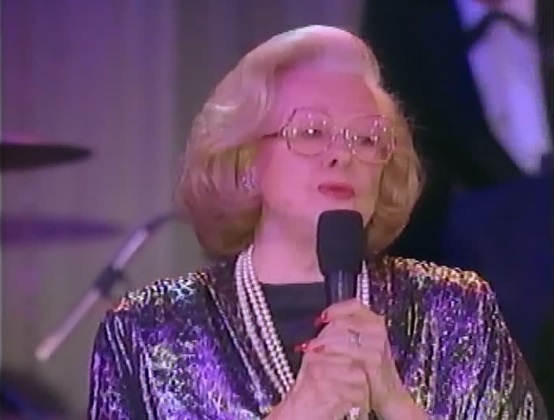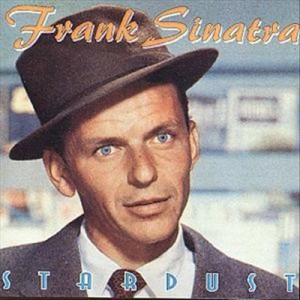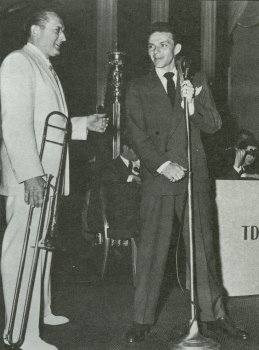24-02-1940 Frank Sinatra at Meadowbrook
On February 24 1940, Tommy Dorsey’s orchestra with Frank Sinatra, Jo Stafford and The Pied Pipers had a live broadcast show at The Meadowbrook, New Jersey. It was a one-hour long broadcast on NBC Radio and they performed the following songs:
College Medley
A Lover Is Blue
Easy Does It
March of The Toys
What Can I Say Dear After I’ve Said I’m Sorry
I Know That You Know
Do I Love You
Careless
Say Si Si
Loser’s Weepers
I’ve Got My Eyes On You
Fraternity Medley
East Of The Sun
Melancholy Baby
Time On My Hands
I Can’t Give You Anything But Love
College Medley
Firstly, let me say that the recordings are between listenable and good. It is highly understandable, but at certain tracks the quality decreases significantly at some intervals.
Frank Sinatra sang the songs A Lover Is Blue, Careless, I’ve Got My Eyes On You, East Of The Sun and Melancholy Baby during this program.
A Lover Is Blue was sang by Jack Leonard when he was in Tommy Dorsey band, too. Compared to Jack Leonard’s version, Frank Sinatra’s is smoother and more crooner-like. This is mostly due to characteristical differences between Leonard’s and Sinatra’s voice and emphasis. In this performance, the orchestra’s arrangement leads to easy-on-the-ears trombones as well, which keeps Sinatra and the band fit to each other.
Careless is a rather OK performance. There are problems with the first parts of the song, but the finishing is fantastic. I would say, the first 2/3 of this song fits Allan Dewitt better, and the last 1/3 fits Frank Sinatra better. Not an easy song.
I’ve Got My Eyes On You starts with a good quality band arrangement, and is followed by a very correct and proper performance of Frank Sinatra. Absolutely worth a try.
East Of The Sun, which we know very well from Frank Sinatra’s recordings with Tommy Dorsey (recorded on 23.04.1940, 2 months after this broadcast), comes quite good. A little bit rushed, but good.
Melancholy Baby is probably the weakest link among these songs. Sinatra fails to hit high notes, just doesn’t fit.
And that concludes the Sinatra part of Meadowbrook broadcast. A Lover Is Blue and I’ve Got My Eyes On You are my picks from that night, and I hope you like them too.











